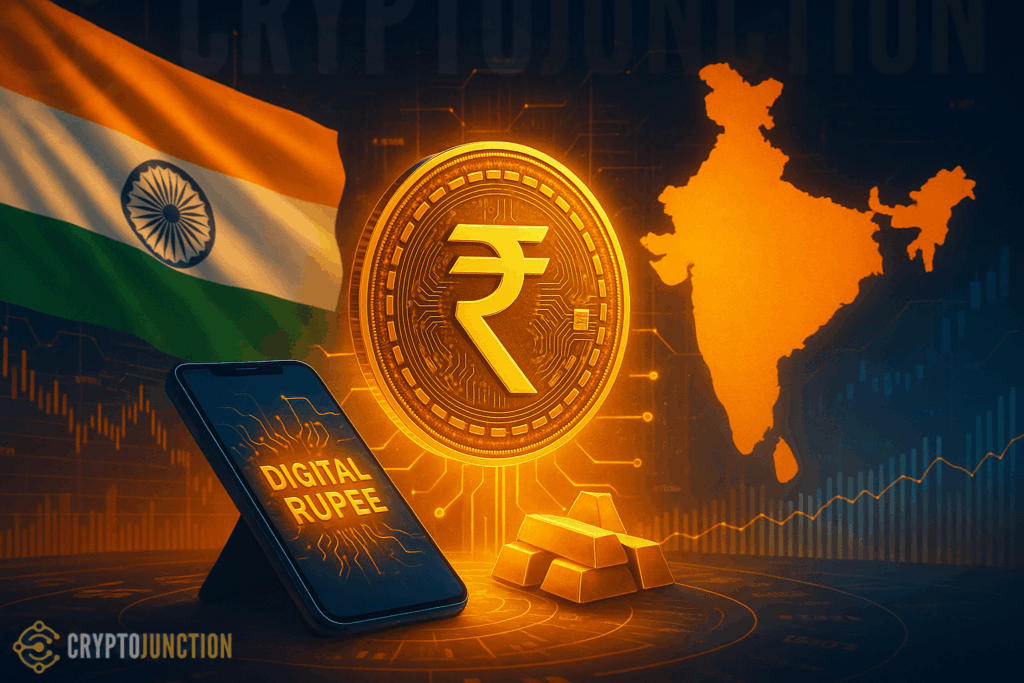India isn’t debating digital currency anymore, it’s deciding the future of it. In a defining statement at a government event in Doha, Union Minister Piyush Goyal confirmed what many had suspected: the government is ready to go all in on its Central Bank Digital Currency (CBDC).
The digital rupee, backed by the Reserve Bank of India, isn’t just another fintech experiment. It’s a statement of intent, a controlled, transparent, and traceable form of money that aims to outpace traditional systems and leave cryptocurrencies struggling for legitimacy.
Goyal described it as “faster, paperless, and fully traceable” , three words that carry a mix of efficiency and surveillance. The plan is to cut paper, cut friction, and bring every rupee into a digital ecosystem the government can see and shape.
Piyush Goyal’s Firm Stance On Crypto
For the crypto community, Goyal’s comments hit with familiar force. His message was direct: cryptocurrencies remain discouraged. Not banned but intentionally burdened with heavy taxes that make trading almost a luxury sport.
The 30% tax on crypto gains, coupled with no allowance for losses, sends a signal that India’s digital finance path won’t be dictated by decentralized coins or private blockchains. Reuters recently reported that the government has no plans to introduce sweeping crypto legislation anytime soon because doing so would, in their words, “grant legitimacy” to an asset class they’d rather keep in check.
And yet, despite this resistance, India leads the world in crypto adoption. According to Chainalysis, the country ranks #1 globally for grassroots crypto activity outpacing every other market in retail, institutional, and DeFi usage. It’s a paradox: the government discourages crypto, but the people keep buying it.
Goyal’s CBDC push might just be the government’s strategic counterpunch of a digital currency that offers the innovation of crypto without the risk of decentralization.
Piyush Goyal’s Digital Vision: A Future Of Controlled Innovation
The push for the digital rupee signals a long-term vision that’s more regulatory than revolutionary. India wants a digital economy, but one built within government walls not in the wild, anonymous corridors of blockchain.
With the CBDC, every transaction is traceable, every exchange transparent. For policymakers, it’s a dream efficiency, oversight, and control wrapped into one sleek digital package. For crypto traders, it’s a warning: the state is entering your arena, but it’s bringing its own rules.
This isn’t a war against crypto; it’s a recalibration. Piyush Goyal’s remarks show that India doesn’t reject digital finance, it’s just redefining it on its own terms. And in a country that’s already leading the world in crypto adoption, this move could either stabilize the ecosystem or spark another wave of underground innovation.
Conclusion
India’s digital finance journey has reached a pivotal stage. The digital rupee isn’t an experiment, it’s the government’s declaration of digital sovereignty. While crypto remains burdened under taxation and regulation, the CBDC offers a vision of money that’s fast, official, and fully under state command.
For the crypto community, the message from Piyush Goyal is clear: adapt, comply, or get left behind. The digital future is coming but it’s coming with the government’s signature on every transaction.

